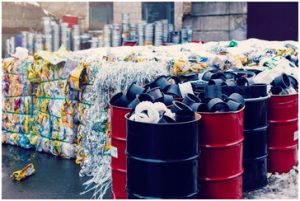
Process technicians use process technology to efficiently convert raw materials into end products on an industrial scale. They range from simple consumer items to more complex commercial products. Process technology can improve pollution reduction, reduce material waste, and make processes more sustainable.
The goal of virtually all manufacturing and processing facilities is to innovate to improve strategies to promote sustainability and minimize environmental impact. These steps also enhance customer acceptance and raise profits for producers while going ‘green.’ Technicians, engineers, and plant operators dedicate their efforts to finding solutions that minimize the world impact of production processes. Contact ITI Technical College today for more information.
Reducing Pollution With Green Process Technology
 Manufacturing and processing facilities have long been criticized for polluting the air, water, and soil. Public and governmental demand has made major strides in bringing this to companies’ attention. Industry leaders using process technology have made reducing pollution a major goal in the U.S. by following these general practices.
Manufacturing and processing facilities have long been criticized for polluting the air, water, and soil. Public and governmental demand has made major strides in bringing this to companies’ attention. Industry leaders using process technology have made reducing pollution a major goal in the U.S. by following these general practices.
- Analyzing and assessing current and past factory pollution and waste
- Building new factories and processing plants in the right places
- Powering facilities with renewable energy
- Treating pollution and waste properly
- Running environmental impact studies
- Follow state and federal pollution laws and regulations
Process technicians work in teams with engineers, plant operators, and other technicians to realize all the above goals. Their efforts help keep our environment cleaner and safer.
Reducing Waste Products With Green Process Technology
The ultimate goal for processing facilities is to adopt a ‘zero-waste challenge’ in all their operations to minimize the negative environmental, human, and wildlife impacts. Most of the waste comes from used plastics, electronics, building materials, and medical products. Current innovations that can be expanded to reduce waste include:
- Increase manufacturing of more ‘green’ biodegradable plastics
- Design electronic components to be more recyclable
- Develop newer building materials that create less waste
- Transform trashed medical and pharmaceutical products into recyclables
- Improve collection and disposal of all these products
Most green process technology companies and industries begin waste reduction before the manufacturing and processing phases begin. Technicians, scientists, and plant operators create a waste reduction plan to include greener purchases of raw materials and artificial intelligence production. This step reduces costs, improves product quality, and increases workplace safety.
| “Process technology can improve pollution reduction, reduce material waste, and make processes more sustainable.” |
Reuse And Recycling In Green Applications
 There is a difference between reusing products and recycling products in going ‘greener.’ Reusing products means using them as is, making some modifications, cleaning them up, or finding new applications for them. Reusing requires less energy and time than recycling and thus reduces waste and pollution. An example is cleaning barrels to store other types of liquids in them that keep the barrels out of landfills.
There is a difference between reusing products and recycling products in going ‘greener.’ Reusing products means using them as is, making some modifications, cleaning them up, or finding new applications for them. Reusing requires less energy and time than recycling and thus reduces waste and pollution. An example is cleaning barrels to store other types of liquids in them that keep the barrels out of landfills.
Recycling entails collecting disposed materials and transforming them into useful new products. Although recycling has been used for many years, it is not 100% efficient. Much energy is needed to transport, process, and reassemble the products. In some cases, it can be very expensive and difficult in others.
Newer innovations are being developed to reduce any processing required for reusing products. Better techniques are in the plans for more effective and less costly transformation of recyclables with green process technology.
Capturing And Using Heat And Carbon Dioxide
New ways of capturing carbon and recycling carbon dioxide from industrial emissions have been developed. With these techniques, carbon dioxide (CO2) is trapped before it escapes into the atmosphere and causes problems. One new approach uses an electrochemical cell that grabs and releases CO2 in less harmful ways. Other industries are now using electrification to help curb carbon emissions.
Many industrial processes generate vast amounts of waste heat that is underutilized or overlooked and can be captured and reused or repurposed. Technologies are being improved to capture and reuse waste heat to improve a facility’s energy efficiency by up to 40% to 50%.
An example is capturing waste heat to heat water in an industrial boiler.
Minimizing Environmental Impact
Efforts to go green have numerous benefits for our planet and its inhabitants. Humans, animals, plant life, and natural resources all experience the negative impacts of pollution and waste materials. Industrial wastes to control are typically solids, liquids, and sometimes gasses. Steps companies can take to minimize the environmental impacts of their waste include:
- Assess the current waste management plans
- Conduct regular waste audits in every department
- Implement a new and strong waste-reduction plan
- Educate the employees to understand and apply plans
- Monitor the progress of the plans
By practicing these steps, a company can reap all its benefits and drive a greener future. If you want to work in process technology to increase sustainability and greener processing, look into earning an associate degree to jumpstart your career.
For more information about graduation rates, the median debt of students who completed the program, and other important information, please visit our website: https://www.iticollege.edu/disclosures

